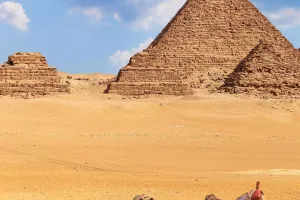In Spain, there is such an island, formed by a volcanic eruption tens of millions of years ago, with a dry climate, sparse population, and an environment as harsh as the surface of the moon. Until 50 years ago, the inhabitants could barely make ends meet by fishing.
In the 1960s, the appearance of an artist completely changed the fate of the island. He almost single-handedly "transformed" the island into a tourist attraction.
This island is the fourth largest of the Canary Islands: Lanzarote. The artist who changed its fate was the resident of Lanzarote, César Manrique. He never thought of completely transforming this "abandoned" island but chose to keep and make full use of everything that exists on the island. He hoped to use the concept of art and sustainable development to show the original beauty of Lanzarote. Striking volcanic landscapes, traditional white buildings, ocean blues, and sparse vegetation...
The way of life of the locals has also changed, and in 1994 Lanzarote was declared a "Biosphere Reserve" by UNESCO. This article will detail the artistic spectacle that César Manrique has created for his hometown.
1. Mirador del Río
Mirador del Río is one of the most impressive places on Lanzarote, built-in 1973. At over 400 meters above sea level, it is undoubtedly an excellent viewing point. The view from above on the kelp between Lanzarote and the small islands of Graciosa gives a rare sense of freedom. The combination of indoor viewing windows and outdoor terraces also provides visitors with a variety of viewing methods.
You can enjoy food indoors, chatting with friends while admiring the view from the window, or you can feel the breeze caressing you while sucking the tranquility next to the railing. Undoubtedly, César Manrique has made this a perfect example of the perfect combination of nature and architecture.
2. Jameos del Agua
Jameos del Agua is César Manrique's first work on the island. This lava cave is mainly composed of black basalt. Inside are blue natural lakes with large green ferns growing. Black, white, blue, and green, the richness of colors, and the vast spaces and echoes inside the caves inspired César Manrique. He designed a stone spiral staircase according to the topography of the cave, leading to the underground concert hall and restaurant, and a blue pool surrounded by green plants outside.
You can not only enjoy the clear and transparent blue lakes and basalt rocks with various shapes, but also dine in cave restaurants, attend cave concerts, and enjoy a feast of sight, hearing and taste.
3. Parque Nacional de Timanfaya
The volcanic eruptions of 1730 and 1736 gave birth to this land, a poetic desolation like no other on earth. Travelers can explore the national park on a volcanic route in special vehicles, and also see 25 dormant craters. The creativity of César Manrique complements this volcanic national park.
To provide meals to traveling tourists, he created El Diablo. César Manrique has stayed true to his sustainability philosophy, building this restaurant out of volcanic rock. Another brilliant idea of César Manrique is to use the intense geothermal energy to cook food, which takes full advantage of the volcano.
4. Jardín de Cactus
Jardín de Cactus is César Manrique's last major work in Lanzarote. César Manrique knows that the dry climate of Lanzarote is not suitable for the survival of most plants, and the dry climate provides a good living environment for cacti. So he decided to build a cactus garden to bring a touch of green to the island. Here you can find around 7200 specimens from over 1100 different cactus species from around the world.
Some of these specimens are startlingly large. In this interesting place, you can take a quiet stroll along the cobblestone paths below and observe the various cacti.
César Manrique dedicated most of his life to his hometown Lanzarote and finally completed this love letter to his hometown. And Lanzarote will always remember this great artist.





